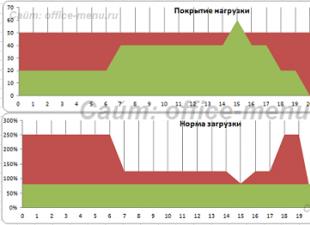I am glad to post here my knowledge and techniques used in PHP and MySQL. As you all aware that PHP and MySQL are the most widely used Open Source for websites. Today’s millions of websites and applications are using these free software’s. Personally I feel that this could be next level for front end developers by using PHP and MySQL a HTML developer can make a website more dynamic. Let us discuss How to create a Basic registration form in PHP with database, Its simple and very useful for a basic website dynamic user dynamic registration. Every creative can implement its basic structure to their website. Now Just follow these simple steps and you will find that your first dynamic functional registration form with database entry on every form fill up.
STEP 1: Create Database for inserting values
Go to MySQL, Create database student; Qurey OK, 1 row affected (0.00 sec) mysql> use student Database changed mysql> create table student(id int,name varchar(40),email varchar(80),password varchar(40)); Query OK, 0 rows affected (0.05 sec)STEP 2: Front end code, Make HTML Structure of your registration form
Make a new file registration.html we will make it in PHP later, the structure would be:STEP 3: For Database connectivity using MySQL
Create a connect.php file for basic database connection use that default code as belowSTEP 4: Finally create a registration.php page to get value of all fields shown in HTML page
Here a Front end developer can write some own code in PHP, Read the code and understand this basic structure line by line you will find it very easy.Conclusion
By following step by step procedure provided above a basic registration form can be created. So best of luck for your first PHP code Get the codeIn this tutorial, I walk you through the complete process of creating a user registration system where users can create an account by providing username, email and password, login and logout using PHP and MySQL. I will also show you how you can make some pages accessible only to logged in users. Any other user not logged in will not be able to access the page.
If you prefer a video, you can watch it on my YouTube channel
The first thing we"ll need to do is set up our database.
Create a database called registration . In the registration database, add a table called users . The users table will take the following four fields.
- username - varchar(100)
- email - varchar(100)
- password - varchar(100)
You can create this using a MySQL client like PHPMyAdmin.
Or you can create it on the MySQL prompt using the following SQL script:
CREATE TABLE `users` (`id` int(11) NOT NULL AUTO_INCREMENT PRIMARY KEY, `username` varchar(100) NOT NULL, `email` varchar(100) NOT NULL, `password` varchar(100) NOT NULL) ENGINE=InnoDB DEFAULT CHARSET=latin1;
And that"s it with the database.
Now create a folder called registration in a directory accessible to our server. i.e create the folder inside htdocs (if you are using XAMPP server) or inside www (if you are using wampp server).
Inside the folder registration, create the following files:

Open these files up in a text editor of your choice. Mine is Sublime Text 3.
Registering a user
Open the register.php file and paste the following code in it:
regiser.php:
Register
Nothing complicated so far right?
A few things to note here:
First is that our form"s action attribute is set to register.php. This means that when the form submit button is clicked, all the data in the form will be submitted to the same page (register.php). The part of the code that receives this form data is written in the server.php file and that"s why we are including it at the very top of the register.php file.
Notice also that we are including the errors.php file to display form errors. We will come to that soon.
As you can see in the head section, we are linking to a style.css file. Open up the style.css file and paste the following CSS in it:
* { margin: 0px; padding: 0px; } body { font-size: 120%; background: #F8F8FF; } .header { width: 30%; margin: 50px auto 0px; color: white; background: #5F9EA0; text-align: center; border: 1px solid #B0C4DE; border-bottom: none; border-radius: 10px 10px 0px 0px; padding: 20px; } form, .content { width: 30%; margin: 0px auto; padding: 20px; border: 1px solid #B0C4DE; background: white; border-radius: 0px 0px 10px 10px; } .input-group { margin: 10px 0px 10px 0px; } .input-group label { display: block; text-align: left; margin: 3px; } .input-group input { height: 30px; width: 93%; padding: 5px 10px; font-size: 16px; border-radius: 5px; border: 1px solid gray; } .btn { padding: 10px; font-size: 15px; color: white; background: #5F9EA0; border: none; border-radius: 5px; } .error { width: 92%; margin: 0px auto; padding: 10px; border: 1px solid #a94442; color: #a94442; background: #f2dede; border-radius: 5px; text-align: left; } .success { color: #3c763d; background: #dff0d8; border: 1px solid #3c763d; margin-bottom: 20px; }
Now the form looks beautiful.
Let"s now write the code that will receive information submitted from the form and store (register) the information in the database. As promised earlier, we do this in the server.php file.
Open server.php and paste this code in it:
server.php
Sessions are used to track logged in users and so we include a session_start() at the top of the file.
The comments in the code pretty much explain everything, but I"ll highlight a few things here.
The if statement determines if the reg_user button on the registration form is clicked. Remember, in our form, the submit button has a name attribute set to reg_user and that is what we are referencing in the if statement.
All the data is received from the form and checked to make sure that the user correctly filled the form. Passwords are also compared to make sure they match.
If no errors were encountered, the user is registered in the users table in the database with a hashed password. The hashed password is for security reasons. It ensures that even if a hacker manages to gain access to your database, they would not be able to read your password.
But error messages are not displaying now because our errors.php file is still empty. To display the errors, paste this code in the errors.php file.
0) : ?>
When a user is registered in the database, they are immediately logged in and redirected to the index.php page.
And that"s it for registration. Let"s look at user login.
Login user
Logging a user in is an even easier thing to do. Just open the login page and put this code inside it:
Login
Everything on this page is quite similar to the register.php page.
Now the code that logs the user in is to be written in the same server.php file. So open the server.php file and add this code at the end of the file:
// ... // LOGIN USER if (isset($_POST["login_user"])) { $username = mysqli_real_escape_string($db, $_POST["username"]); $password = mysqli_real_escape_string($db, $_POST["password"]); if (empty($username)) { array_push($errors, "Username is required"); } if (empty($password)) { array_push($errors, "Password is required"); } if (count($errors) == 0) { $password = md5($password); $query = "SELECT * FROM users WHERE username="$username" AND password="$password""; $results = mysqli_query($db, $query); if (mysqli_num_rows($results) == 1) { $_SESSION["username"] = $username; $_SESSION["success"] = "You are now logged in"; header("location: index.php"); }else { array_push($errors, "Wrong username/password combination"); } } } ?>Again all this does is check if the user has filled the form correctly, verifies that their credentials match a record from the database and logs them in if it does. After logging in, the user is redirected them to the index.php file with a success message.
Now let"s see what happens in the index.php file. Open it up and paste the following code in it:
Home Page
Welcome
logout
The first if statement checks if the user is already logged in. If they are not logged in, they will be redirected to the login page. Hence this page is accessible to only logged in users. If you"d like to make any page accessible only to logged in users, all you have to do is place this if statement at the top of the file.
The second if statement checks if the user has clicked the logout button. If yes, the system logs them out and redirects them back to the login page.
Now go on, customize it to suit your needs and build an awesome site. If you have any worries or anything you need to clarify, leave it in the comments below and help will come.
You can always support by sharing on social media or recommending my blog to your friends and colleagues.
Laravel requires Composer to manage the project dependencies. So before installing Laravel, make sure you have Composer installed on your system. In case you are hearing about Composer for the first time, it"s a dependency management tool for php similar to node"s npm.
To install Composer on your machine, check this post:
Installing Laravel on Windows:
Follow the below steps to install laravel on windows machine. No matter you have xampp/wamp stack, it works for both. On WAMP, make sure to install laravel on "www" folder and on XAMPP, obviously the "htdocs".
STEP-1) Open "htdocs" folder on XAMPP, hold SHIFT key and right click on the folder, and choose "open command window here". Alternatively, you can open command window and change directory to "xampp/htdocs".
STEP-2) Enter the following command.
Composer create-project laravel/laravel my_laravel_site --prefer-dist
Here "my_laravel_site" is the folder name where laravel files will be installed. Change this to your liking.
STEP-3) Now it"s time to be patient as laravel installation is going to take some time.
STEP-4) Once installed, change directory to "my_laravel_site" (cd "my_laravel_site") on the command prompt and enter the below command.
Php artisan serve
STEP-5) This will show a message something like, "Laravel development server started:" along with an url.
STEP-6) Copy and paste the url on the browser. If things go right, you"d see the laravel welcome screen.

STEP-7) Done! You have successfully installed laravel on windows machine and ready to go with.
Setting Application Key:
Laravel requires little configuration after installation. It requires you to set the application key. This is a random string of 32 characters long used for encrypting session and other sensitive data. Usually this will be set automatically when you install laravel via composer or laravel installer.
In case it"s not set, you have to do it manually. First make sure to rename the ".env.example" file to ".env" on your application root. Then open command prompt and change to the laravel project folder. Now run the below command to generate the key.
Php artisan key:generate
Copy this generated key to the APP_KEY variable on ".env" file. Save and you are done.
Installing Specific Laravel Version:
The above given method will make composer to download and install the latest version of laravel. If you want to install earlier versions of laravel on your machine, make sure to include the respective version number on create-project command.
Composer create-project laravel/laravel=5.4 your-project-name --prefer-dist Read Also:
Likewise you can easily install laravel using composer on windows . I hope you find this tutorial useful. Please share it on your social circle if you like it.
Creating a membership based site seems like a daunting task at first. If you ever wanted to do this by yourself, then just gave up when you started to think how you are going to put it together using your PHP skills, then this article is for you. We are going to walk you through every aspect of creating a membership based site, with a secure members area protected by password.
The whole process consists of two big parts: user registration and user authentication. In the first part, we are going to cover creation of the registration form and storing the data in a MySQL database. In the second part, we will create the login form and use it to allow users access in the secure area.
Download the code
You can download the whole source code for the registration/login system from the link below:
Configuration & Upload
The ReadMe file contains detailed instructions.
Open the source\include\membersite_config.php file in a text editor and update the configuration. (Database login, your website’s name, your email address etc).
Upload the whole directory contents. Test the register.php by submitting the form.
The registration form
In order to create a user account, we need to gather a minimal amount of information from the user. We need his name, his email address and his desired username and password. Of course, we can ask for more information at this point, but a long form is always a turn-off. So let’s limit ourselves to just those fields.
Here is the registration form:
So, we have text fields for name, email and the password. Note that we are using the for better usability.
Form validation
At this point it is a good idea to put some form validation code in place, so we make sure that we have all the data required to create the user account. We need to check if name and email, and password are filled in and that the email is in the proper format.
Handling the form submission
Now we have to handle the form data that is submitted.
Here is the sequence (see the file fg_membersite.php in the downloaded source):
function RegisterUser() { if(!isset($_POST["submitted"])) { return false; } $formvars = array(); if(!$this->ValidateRegistrationSubmission()) { return false; } $this->CollectRegistrationSubmission($formvars); if(!$this->SaveToDatabase($formvars)) { return false; } if(!$this->SendUserConfirmationEmail($formvars)) { return false; } $this->SendAdminIntimationEmail($formvars); return true; }
First, we validate the form submission. Then we collect and ‘sanitize’ the form submission data (always do this before sending email, saving to database etc). The form submission is then saved to the database table. We send an email to the user requesting confirmation. Then we intimate the admin that a user has registered.
Saving the data in the database
Now that we gathered all the data, we need to store it into the database.
Here is how we save the form submission to the database.
function SaveToDatabase(&$formvars) { if(!$this->DBLogin()) { $this->HandleError("Database login failed!"); return false; } if(!$this->Ensuretable()) { return false; } if(!$this->IsFieldUnique($formvars,"email")) { $this->HandleError("This email is already registered"); return false; } if(!$this->IsFieldUnique($formvars,"username")) { $this->HandleError("This UserName is already used. Please try another username"); return false; } if(!$this->InsertIntoDB($formvars)) { $this->HandleError("Inserting to Database failed!"); return false; } return true; }
Note that you have configured the Database login details in the membersite_config.php file. Most of the cases, you can use “localhost” for database host.
After logging in, we make sure that the table is existing.(If not, the script will create the required table).
Then we make sure that the username and email are unique. If it is not unique, we return error back to the user.
The database table structure
This is the table structure. The CreateTable() function in the fg_membersite.php file creates the table. Here is the code:
function CreateTable() { $qry = "Create Table $this->tablename (". "id_user INT NOT NULL AUTO_INCREMENT ,". "name VARCHAR(128) NOT NULL ,". "email VARCHAR(64) NOT NULL ,". "phone_number VARCHAR(16) NOT NULL ,". "username VARCHAR(16) NOT NULL ,". "password VARCHAR(32) NOT NULL ,". "confirmcode VARCHAR(32) ,". "PRIMARY KEY (id_user)". ")"; if(!mysql_query($qry,$this->connection)) { $this->HandleDBError("Error creating the table \nquery was\n $qry"); return false; } return true; }
The id_user field will contain the unique id of the user, and is also the primary key of the table. Notice that we allow 32 characters for the password field. We do this because, as an added security measure, we will store the password in the database encrypted using MD5. Please note that because MD5 is an one-way encryption method, we won’t be able to recover the password in case the user forgets it.
Inserting the registration to the table
Here is the code that we use to insert data into the database. We will have all our data available in the $formvars array.
function InsertIntoDB(&$formvars) { $confirmcode = $this->MakeConfirmationMd5($formvars["email"]); $insert_query = "insert into ".$this->tablename."(name, email, username, password, confirmcode) values ("" . $this->SanitizeForSQL($formvars["name"]) . "", "" . $this->SanitizeForSQL($formvars["email"]) . "", "" . $this->SanitizeForSQL($formvars["username"]) . "", "" . md5($formvars["password"]) . "", "" . $confirmcode . "")"; if(!mysql_query($insert_query ,$this->connection)) { $this->HandleDBError("Error inserting data to the table\nquery:$insert_query"); return false; } return true; }
Notice that we use PHP function md5() to encrypt the password before inserting it into the database.
Also, we make the unique confirmation code from the user’s email address.
Sending emails
Now that we have the registration in our database, we will send a confirmation email to the user. The user has to click a link in the confirmation email to complete the registration process.
function SendUserConfirmationEmail(&$formvars) { $mailer = new PHPMailer(); $mailer->CharSet = "utf-8"; $mailer->AddAddress($formvars["email"],$formvars["name"]); $mailer->Subject = "Your registration with ".$this->sitename; $mailer->From = $this->GetFromAddress(); $confirmcode = urlencode($this->MakeConfirmationMd5($formvars["email"])); $confirm_url = $this->GetAbsoluteURLFolder()."/confirmreg.php?code=".$confirmcode; $mailer->Body ="Hello ".$formvars["name"]."\r\n\r\n". "Thanks for your registration with ".$this->sitename."\r\n". "Please click the link below to confirm your registration.\r\n". "$confirm_url\r\n". "\r\n". "Regards,\r\n". "Webmaster\r\n". $this->sitename; if(!$mailer->Send()) { $this->HandleError("Failed sending registration confirmation email."); return false; } return true; }
Updates
9th Jan 2012
Reset Password/Change Password features are added
The code is now shared at GitHub .
Welcome back UserFullName(); ?>!
License

The code is shared under LGPL license. You can freely use it on commercial or non-commercial websites.
No related posts.
Comments on this entry are closed.
 sotikteam.ru Смартфоны. Антивирусы. Программы. Инструкции. Браузеры.
sotikteam.ru Смартфоны. Антивирусы. Программы. Инструкции. Браузеры.


